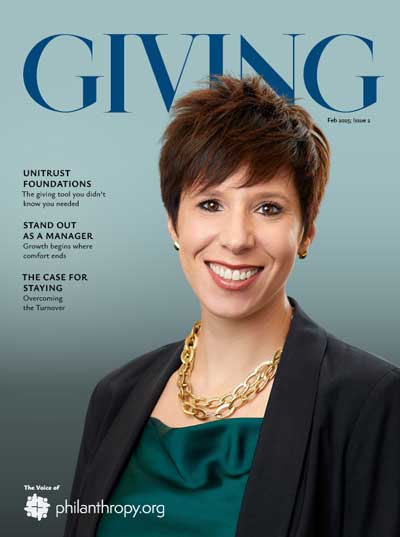Let’s Talk About Charitable Giving
When you think about donating to charity, what comes to mind?
Most of us picture generosity and kindness—people stepping up to make the world a better place. But behind every gift lies a complex system of tax benefits, sparking plenty of debates.
On one hand, these benefits encourage giving. On the other, they effectively subsidize philanthropy with public funds, raising tough questions about fairness. Does this system mainly help wealthy donors? Are these tax breaks good for society? If you’re a fundraiser or a philanthropist, these are questions worth unpacking.
Let’s dive in and explore both sides.
How Do Tax Benefits for Charitable Giving Work?
In simple terms, the government offers a financial incentive to give to nonprofits. If you donate to a qualified charity, you can deduct that amount from your taxable income, reducing the taxes you owe.
Here’s an example: If someone in a high tax bracket donates $1,000 to a nonprofit, the tax deduction lowers their taxable income. Depending on their tax rate, they might save hundreds of dollars on their taxes.
The idea is to make giving more appealing by making it less expensive. And for those with higher incomes—who are in higher tax brackets—the savings are even more significant.
The Upside: Why Tax Benefits Matter
The argument in favor of tax breaks is simple: they motivate people to give. When donors have a financial incentive, they’re more likely to support causes that matter to them.
And let’s be honest—nonprofits do a lot of heavy lifting. They tackle issues like poverty, healthcare, education, and disaster relief. Some even argue that without tax breaks, donors might give less, and nonprofits might struggle to fill gaps left by government programs.
For fundraisers, these tax benefits can be a powerful tool. When you’re asking someone to donate, being able to say, “And it’s tax-deductible!” can tip the scales in your favor.
The Flip Side: Who Really Benefits?
But not everyone sees this system as fair. Critics argue that tax benefits mostly help wealthy donors. Why? Because the more money you make, the higher your tax bracket—and the more valuable those deductions become.
Here’s the rub: If a wealthy donor gives $1,000, they might save $300 or more on their taxes. But someone with a lower income and a lower tax rate might only save $100 for the same donation.
In this way, public funds (in the form of forgone tax revenue) are essentially subsidizing the charitable choices of the wealthy. And not all donations go to urgent causes. Some support elite institutions like private universities or exclusive museums—worthwhile, perhaps, but not exactly addressing pressing societal needs.
Are Tax Benefits for Everyone?
Here’s another wrinkle: not everyone gets to use these tax benefits. After the 2017 tax reform in the U.S., the standard deduction increased, meaning fewer people itemize their deductions. And if you don’t itemize, you don’t get a tax break for your donations.
This shift has led to fewer middle-income households benefiting from charitable deductions, which some see as unfair. Shouldn’t everyone, not just the wealthy, be encouraged to give?
Are Public Subsidies a Problem?
When you give to charity and claim a tax deduction, the government collects less in taxes. This means public funds are indirectly supporting your donation. Is that a bad thing?
Supporters argue it’s a good trade-off. Nonprofits provide critical services that might otherwise fall to government programs. Subsidizing philanthropy, from this point of view, benefits everyone.
Critics, however, worry about accountability. Unlike government spending, which is subject to public oversight, charitable donations reflect the preferences of individual donors. This can lead to funding priorities that don’t necessarily align with the broader public good.
What Does This Mean for Fundraisers and Philanthropists?
If you’re a fundraiser, it’s important to understand these dynamics. When you’re talking to donors, acknowledging the bigger picture can help build trust. For example, emphasizing how their gift aligns with urgent community needs or explaining how tax benefits work without overpromising can make a difference.
For philanthropists, it’s worth reflecting on the impact of your giving. Are your donations addressing pressing societal challenges, or are they supporting personal passions? It’s not an either-or question, but striking a balance can help address concerns about fairness.
Is There a Better Way?
The debate over tax benefits isn’t new, and it probably won’t go away anytime soon. But that doesn’t mean we can’t think about ways to improve the system.
Some ideas on the table include offering a universal charitable deduction (so everyone benefits, not just itemizers) or capping deductions for high-income donors to level the playing field. Others suggest looking at ways to measure the true impact of philanthropy and adjust policies accordingly.
Whatever happens, the conversation is worth having. As fundraisers and philanthropists, you have a unique opportunity to shape the future of giving by advocating for policies that support generosity while also addressing fairness and accountability.
Let’s Keep the Conversation Going
So, where do you land on this? Are tax benefits for charitable giving a necessary tool for encouraging generosity? Or do they give the wealthy too much of an advantage?
There’s no easy answer, but one thing’s for sure: the decisions we make about these policies will shape the future of philanthropy and its role in society. Whether you’re asking for donations or giving them, it’s a conversation worth exploring.
Let’s keep talking. Generosity is at its best when it’s thoughtful and intentional—and when it truly makes a difference.






